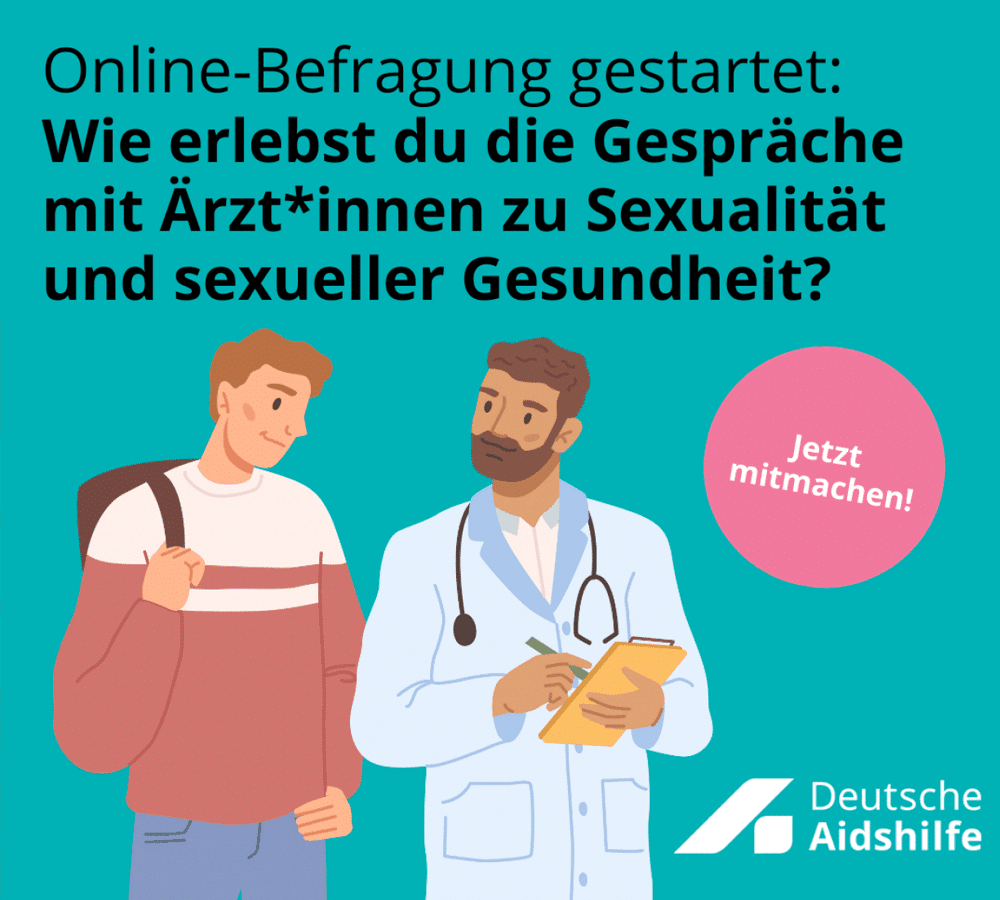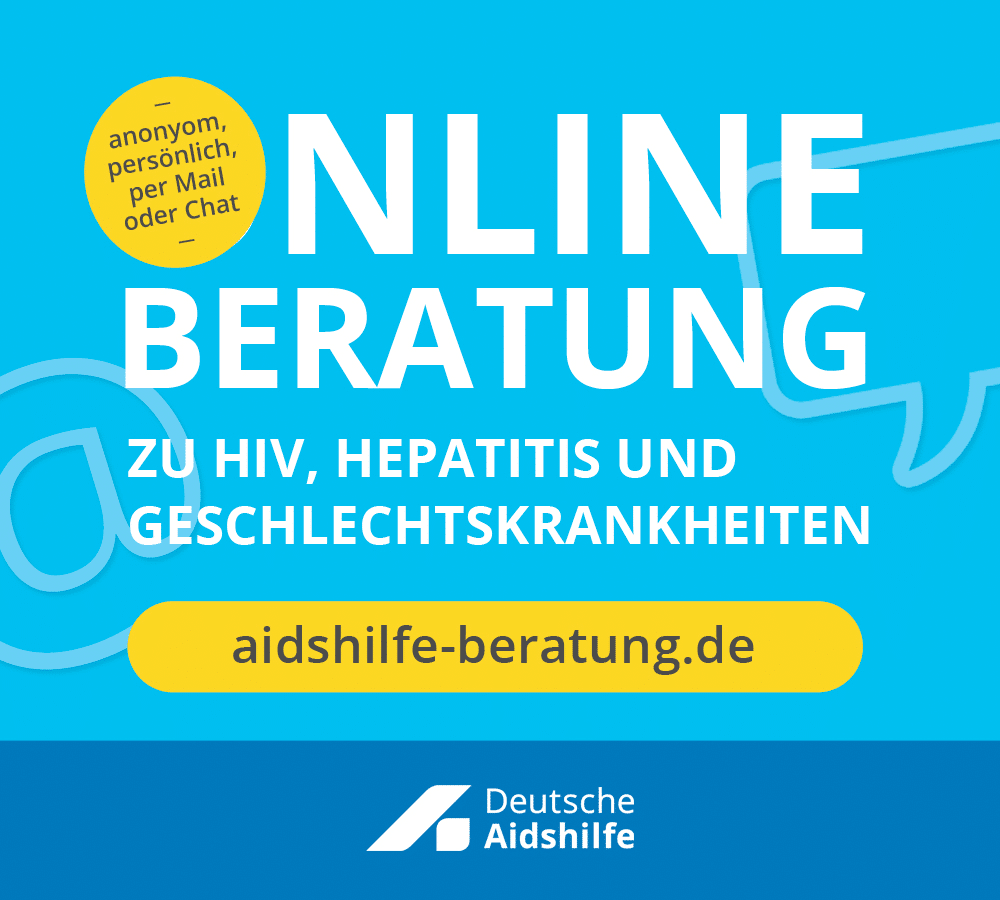In principle, HIV is relatively difficult to transmit. There is only a risk of infection when wounds and mucous membranes come into contact with infectious bodily fluids.
This can lead to transmission during sex. There is also an increased risk when sharing syringes for drug use. However, there is no transmission in everyday life.
Body fluids that may contain HIV in quantities relevant to infection are:
- Blood
- Sperm
- Fluid film on the mucous membrane of the rectum
- Fluid in the front hole (term chosen by trans* men)
Transmission during sex
HIV is most frequently passed on during sexual intercourse if none of the Three safer sex methods is used. As the mucous membranes in the intestine and front hole can contain many HI viruses, there is also a risk for the "active" (penetrating) partner during fucking.
There is also a risk of transmission if you do not cum inside your partner, namely via intensive contact between the mucous membranes of the penis and rectum or penis and front hole.
Extremely low risk when blowing
The risk of HIV infection is extremely low when blowing bubbles. Transmission is only possible if sperm or blood containing a large amount of viruses is ingested by mouth. The oral mucosa makes the difference: It is significantly more resistant to HIV than other mucous membranes.
There are therefore only a few known cases worldwide of HIV infection through semen or blood during oral sex.
No HIV transmission through pleasure drops
Before you cum during sex, a small amount of fluid can leak out of your cock - also known as pleasure drops. Don't worry: HIV can't be transmitted during oral sex through the pleasure droplet.
Sexually transmitted diseases increase HIV risk
Other Venereal diseases increase the risk of HIV: inflamed mucous membranes make it easier for HIV to enter or leave the body. Additional immune cells also migrate to the inflamed areas, which can directly absorb HIV and pass it on to other cells.
In people with HIV who are not taking HIV medication, inflamed mucous membranes contain a particularly high number of HI viruses.
Info
ICH WEISS WAS ICH TU focuses on gay men. Of course, other people and groups are also affected by HIV. Other transmission routes can play a role here. You can find a complete overview at aidshilfe.de.
The treatment protects: HIV medication suppresses the virus in the body. HIV is then not transmissible even during sex.
The amount of virus is decisive
The risk of HIV transmission is increased when there are particularly high levels of viruses in the blood and body fluids. This is for example in the first weeks after an HIV infection This is the case because the virus then multiplies particularly strongly.
The risk is much lower if there are only a few viruses in the blood, for example if HIV medication prevents the virus from replicating.
HIV medication even suppresses the multiplication of the HI viruses in the body to such an extent that the virus can no longer be detected with the usual methods after some time: the quantity of HI viruses ("viral load") is below the so-called detection limit. HIV is then no longer transmissible during sex. You can find out more about "Protection through therapy" here.
But even if the viral load is not below the detection limit, not every unprotected sex between an HIV-positive and an HIV-negative partner automatically leads to transmission. The risk of infection increases if none of the three Safer sex methods applies.
Gay men have a higher risk than others
Men who have sex with men have a particularly high risk of becoming infected, as HIV is more widespread in this population group in Germany. This increases the likelihood of having sex with an HIV-positive partner who is not yet taking HIV medication.
Transmission in drug & substance use
There is a very high risk of HIV when sharing syringes and needles when using drugs. HIV can thus enter the bloodstream directly. The virus can also persist for several days in blood residues on the syringe. More about this on our pages on the subject of drugs and substances.
No transmission in everyday life
There is no risk of HIV transmission in everyday situations, for example:
- Kiss, handshake, hug
- Coughing or sneezing
- Use of the same plates, glasses and cutlery
- Shared use of toilets, towels or bed linen
- Visits to swimming pools or saunas
- Working and living together with people with HIV/AIDS
- Looking after and caring for people with HIV/AIDS
- First aid, provided that the hygiene regulations are observed (gloves, respiratory mask)
- medical and cosmetic treatments (dentist, pedicure, etc.), provided that the hygiene regulations are observed
- Tattooing and piercing, provided that work is carried out under hygienic conditions.
HIV can generally not can be transmitted via saliva, sweat, tear fluid, urine or faeces.





